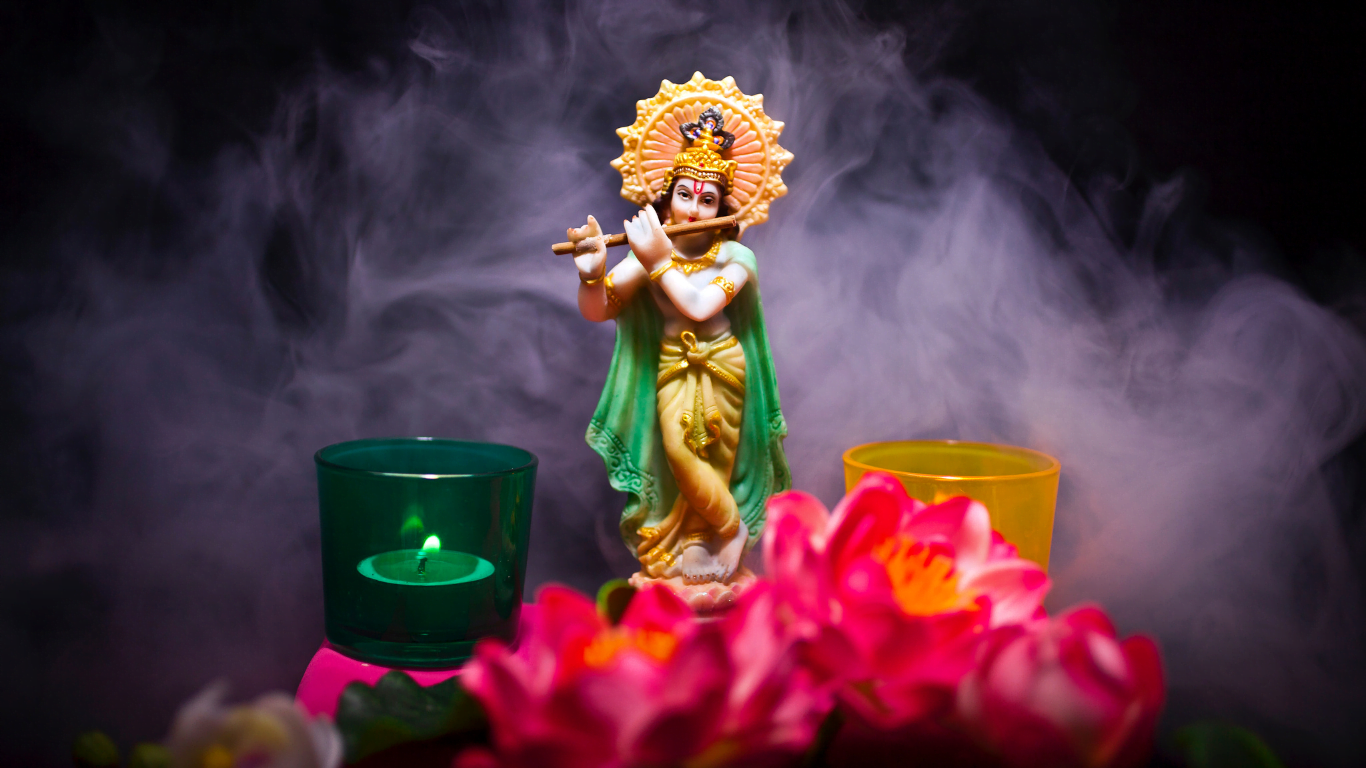Krishna Janmashtami: Where Tradition Meets Celebration
Janmashtami is a Hindu festival that celebrates the birth of Lord Krishna, one of the most revered deities in Hinduism.
Janmashtami typically falls in the month of August or September, depending on the Hindu lunar calendar. Janmashtami is a multi-faceted festival that combines devotion, spirituality, and cultural celebrations. It serves as a reminder of the divine presence of Lord Krishna and his timeless teachings that continue to inspire and guide people in their spiritual journeys. The festival fosters unity and love among devotees, strengthening their bond with Lord Krishna.
Lord Krishna is believed to be the eighth avatar (incarnation) of Lord Vishnu, who is considered the preserver and protector of the universe in Hindu mythology. The story of Janmashtami is primarily based on the life and legends of Lord Krishna. According to Hindu scriptures and mythology, Lord Krishna was born in Mathura, a city in northern India, to King Vasudeva and Queen Devaki. However, his birth took place under extraordinary circumstances. Devaki’s brother, King Kansa, was a tyrant who had received a prophecy that he would be killed by the eighth child of Devaki. Fearing his own demise, Kansa imprisoned Devaki and Vasudeva.
Despite Kansa’s efforts to prevent the prophecy from coming true, Lord Krishna was born in the midnight hour in the prison cell where Devaki and Vasudeva were held. It is said that the prison doors miraculously opened, and Vasudeva was able to carry the infant Krishna to safety across the Yamuna River to the village of Gokul. Lord Krishna grew up in Gokul, where he performed various miraculous feats and played pranks on the residents. He became known for his mischievous and playful nature.
The actual birth moment of Lord Krishna, believed to occur at midnight, is the most significant part of Janmashtami celebrations. Temples and homes are beautifully decorated with flowers and lights. Devotees observe a strict fast throughout the day, breaking it only after midnight with a special feast that includes a variety of delicious dishes, sweets, and fruits.
Devotees gather at temples and homes to sing devotional songs (bhajans) dedicated to Lord Krishna. Traditional instruments like the flute, drums, and cymbals are often used in these musical celebrations. People also engage in ecstatic dance, expressing their love and devotion to the Lord.
Temples dedicated to Lord Krishna, such as the Krishna Janmabhoomi temple in Mathura and the Banke Bihari Temple in Vrindavan, witness a large influx of pilgrims and devotees during Janmashtami. These temples conduct special rituals and events, and devotees often visit them to seek Lord Krishna’s blessings. Devotees offer prayers, flowers, fruits, and other offerings to Lord Krishna’s idols or images. Aarti, a ritual of waving lamps before the deity, is performed, and devotees offer their heartfelt devotion and gratitude.
In many places, Janmashtami is celebrated with cultural performances, including dramas, skits, and dance performances that narrate episodes from Lord Krishna’s life. These events help spread awareness of the significance of the festival among people of different backgrounds. Janmashtami is also a time for acts of charity and community service. Devotees often participate in activities like distributing food, clothing, and gifts to the less fortunate, emphasizing the importance of selfless service and compassion.
Janmashtami is celebrated to commemorate Lord Krishna’s birth and the divine qualities and actions attributed to him during his earthly life. Devotees fast, sing devotional songs, and offer prayers throughout the day and night leading up to midnight, which is believed to be the time of Lord Krishna’s birth. Temples are beautifully decorated, and idols of Krishna are adorned with new clothes and jewelry. Devotees often engage in a ritualistic reenactment of the midnight birth, known as “Janmashtami Pooja” or “Krishna Janmotsav,” where the baby Krishna idol is bathed, placed in a cradle, and swung gently.
One of the most popular customs associated with Janmashtami is the “Dahi Handi” (pot of yogurt) breaking ceremony, which reenacts Lord Krishna’s love for butter and curd. Young men form human pyramids to reach and break a pot filled with yogurt that is suspended at a height, symbolizing the mischievous Krishna’s efforts to steal butter and curd from homes in Gokul. Janmashtami is a joyous and colorful festival that is celebrated with great enthusiasm and devotion by millions of Hindus around the world. It serves as a reminder of the timeless teachings and divine leelas (playful actions) of Lord Krishna and his message of love, righteousness, and devotion.
https://www.britannica.com/topic/Janmashtami

